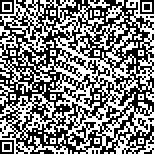| This article has been:Browse 2029Times Download 3155Times |

scan it! |
|
|
| DOI:10.13522/j.cnki.ggps.2017.0610 |
|
| Impact of Water-fertilizer Interaction on Yield and Nitrogen Use Efficiency of Soya Bean |
|
SUN Yunling, YANG Shuqing, LIU Deping, LIU Min, FU Xian
|
|
1.Inner Mongolia Agricultural University, Hohhot 010018, China; 2.Northeast Agricultural University, Harbin 150030, China
|
| Abstract: |
| 【Objective】 Rain-fed agriculture is susceptible to low and unstable yield and has a low fertilizer use efficiency. The purpose of this paper is to explore the ways to improve these by taking Arongqi and Hulunbeier of Inner Mongolia as example.【Method】 The experiment focused on soya bean. We considered three irrigation rates: 600 m3/hm2 (W1), 1 000 m3/hm2 (W2) and 1 400 m3/hm2 (W3), and three nitrogen fertilizations: 70 kg/hm2 (N1), 95 kg/hm2 (N2) and 120 kg/hm2 (N3). We compared all above treatments with rain-fed either with N3 fertilizer application (W0N3) or no fertilizer application at all (W0N0). For each treatment, we measured its nitrogen use efficiency, residual nitrogen content in the soil and yield of the soya beans.【Result】 The water-fertilizer interaction had a great impact on yield. The W3-N2 reduced nitrogen application by 20.8%, yet increased the yield by 59.2%. Reducing nitrogen application boosted plant uptake of the nitrogen, while excessive nitrogen application could result in antagonistic effect. Nitrogen uptake by the plant increased by 3.92 g/kg in W2 and W3 treatment compared with the conventional W0-N0 and W0-N3 treatment. Both fertilizer use efficiency of the soya bean and the apparent fertilizer use efficiency decreased as the nitrogen application increased. Increasing irrigation amount promoted plant nitrogen uptake efficiency and increased fertilizer use efficiency as a result. The fertilizer application was closely related to the yield. The contribution of fertilizer to yield at W1-N1 was the lowest, accounting for 12.23% only, while the contribution at W3-N2 was the highest, reaching 43.24%. The physiological nitrogen use rate increased with the increase in irrigation amount, of which W3-N2 increased by 51.9% compared to W0N3. An appropriate combined application of water and nitrogen in W3N2 reduced residual nitrogen in soil after harvest by 10.32 kg/hm2 compared to W0N3. 【Conclusion】 The recommended irrigation and nitrogen applications amount was 1 400 m3/hm2 and 95 kg/hm2 respectively. |
| Key words: soybean; interaction of water and nitrogen; fertilizer use efficiency; nitrogen residue |
|
|